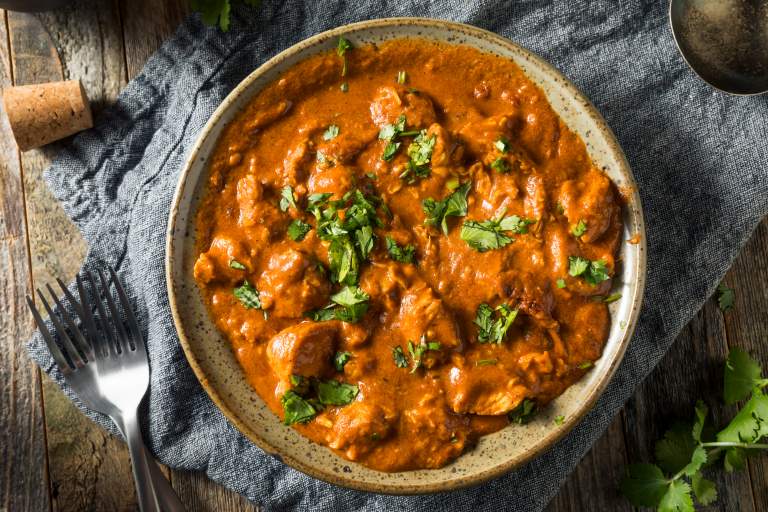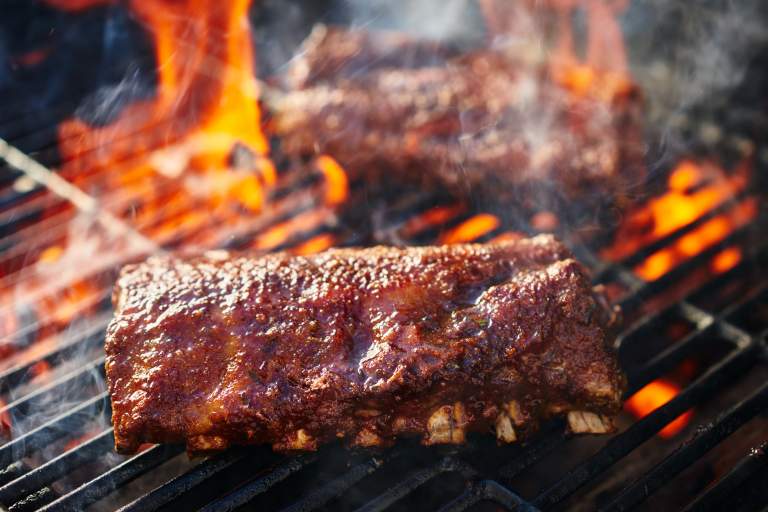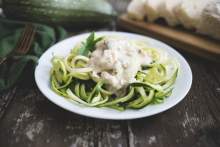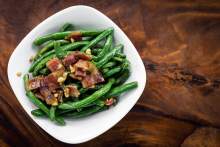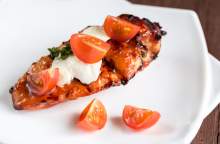American
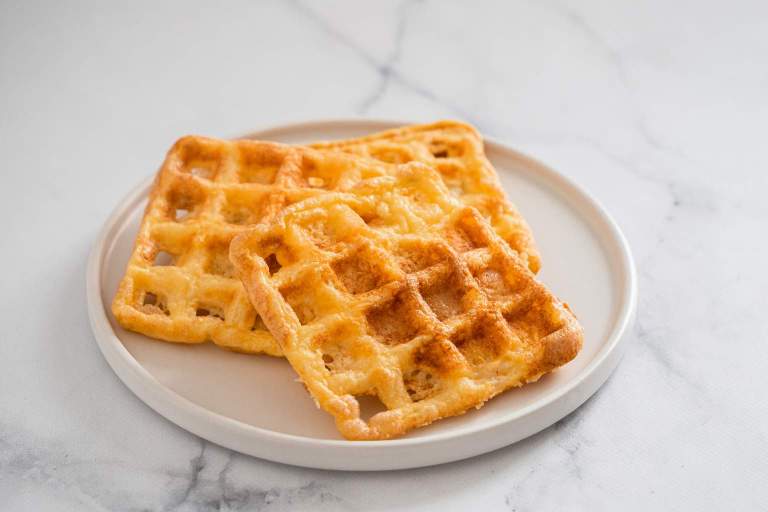
American Cuisine
American Cuisine covers a wide array of dishes, and it goes far beyond the well-known Mac and cheese, breaded & fried snacks, tex-mex, pies, and shortcakes.
Let’s dig deeper for a comprehensive understanding of the diverse food relished by people living in the United States of America!
European, Native American, and Other Influences
American Cuisine traces its origin to European roots. Today, an American platter is recognized for its meat, steak, bacon, or chicken. Interestingly, the European settlers introduced the nation to pork, beef, and lamb.
A heavy influence of Native American ingredients and cooking techniques is evident in American dishes. Earlier than the 17th century, the nomadic Native Americans primarily used beans, corn, & squash in their recipes. Different animals such as rabbits, elk, deer, and hare were hunted and cooked on heated rocks.
The Native American tradition of spit roasting, grilling meat & veggies, and baking bread & other dishes is still prevalent in American cuisine. Friends and families come together on the 4th of July, Memorial Day, or Labour Day for a classic cook-out. Everyone feasts on hot dogs, burgers, fried chicken, potato salad, BBQ chicken, Baked beans, etc.
Slowly, folks from far away places began to settle in the United States. Thus Asian, Pacific Islandic, African, Irish, Italian, and various other food cultures blended with the local ingredients and became a part of American delicacies.
South American Food
Corn, potatoes, tropical fruits (like coconut, mango, papaya, guava, pineapple), peppers, fresh cheese (Queso fresco), and yucca are some chief crops cultivated in the Sothern region of the United States.
Rice, cornbread, corn pudding, fried chicken, Philly cheesesteak, BBQ meat, brisket burger, steak & gravy, and shrimp are some typical delicacies of Texax, Tennessee, Florida, and Philadelphia. These authentic Southern food have carved a place in the diverse American cuisine.
North Eastern Food
The North-Eastern region of the United States falls beside the Atlantic Ocean. Therefore, it is well-known for its seafood dishes, prepared especially using lobsters and clams. The Maryland crab cakes are worth a mention too.
The lobster roll is a popular Maine dish often served with crispy fried potato chips, and it’s a long hot dog roll stuffed with cooked lobster meat and butter. The juicy, succulent, and tender lobster meat is boiled, steamed, or grilled to form the base of salads, bisques, & chowders.
The New England Clam Chowder recipe from the 15th century is now classic American cuisine. The luscious stew with clams, milk, and veggies is still prepared authentically and served at the Union Oyster House, the oldest restaurant in America.
Midwestern Food
The vast stretches of grasslands in the midwest area of America produce corn, wheat, and soy crops abundantly. In the 16th century, the Germans and British brought the famous bread pudding, meat pies, soups, sausages, and roasts.
The hearty meals of stews and roasts are often accompanied by rice or wheat/cornbread on the side. The dishes are mildly flavored using fresh herbs. A family get-together in the Midwest will typically have a delicious spread of beef roast, hamburgers, grilled steak, meatloaf, green beans, baked/mashed potatoes, corn on the cob, & apple pie.
Chinese
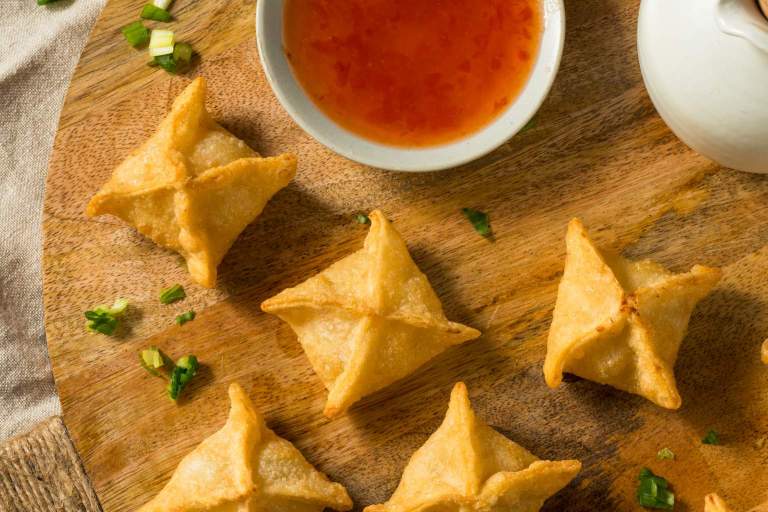
Do you love Chinese food? Well we're got a great set of Lean and Green Chinese recipes that will keep you on plan and satisfy your desire for good Chinese cuisine.
Cuban
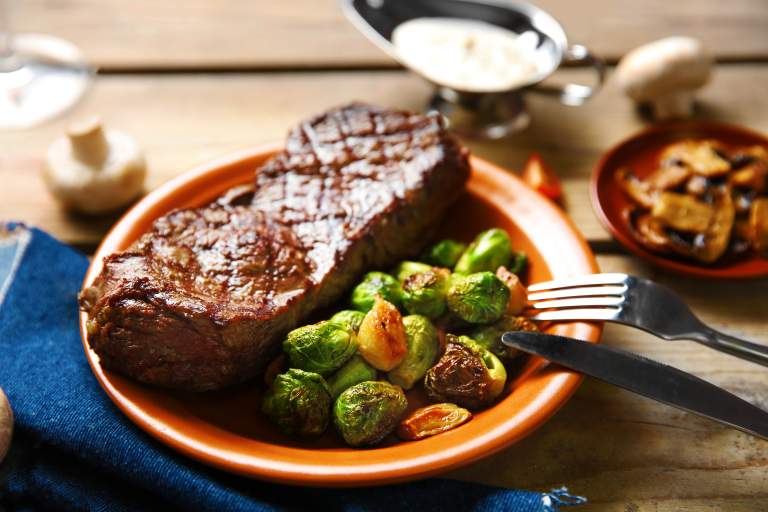
Cuban cuisine is a fusion of Spanish, African, and Caribbean culinary traditions. The cuisine is known for its bold flavors, vibrant colors, and unique combinations of ingredients. One of the most popular dishes in Cuban cuisine is the classic Cuban steak, or bistec de palomilla. This dish features a thin-cut steak that is marinated in a citrus and garlic marinade before being pan-fried to perfection. The steak is typically served with rice and beans, plantains, and a side salad. The dish is known for its tender and juicy texture and flavorful seasoning.
Cuban cuisine also features a variety of other delicious dishes, such as ropa vieja, which is a savory stew made with shredded beef, onions, peppers, and tomatoes. Another popular dish is lechón asado, which is a slow-roasted pork dish that is typically marinated in a mixture of citrus and spices. Cuban cuisine also features a range of delicious seafood dishes, such as shrimp in garlic sauce and grilled fish with tropical salsa. With its rich history and diverse cultural influences, Cuban cuisine is a must-try for anyone who loves bold and flavorful dishes.
French
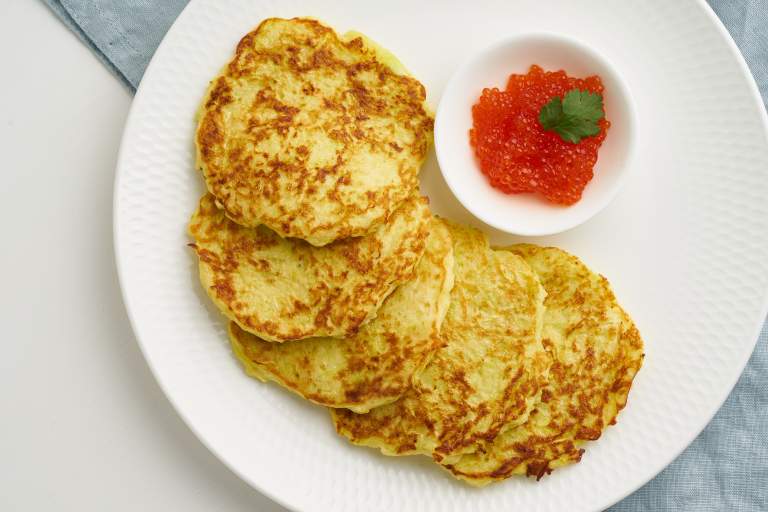
French Cuisine
The beautiful French language and incredible French cuisine are gems of France. The preparation of seasonal ingredients found in French cuisine is intended to create flavorsome dishes designed to allure the senses.
The global love for French cuisine garnered the honor of being listed in the intangible cultural heritage by UNESCO in 2010.
Let's dive into the impeccable French cuisine's history, ingredients, and delicacies. Bon Appetit!
A Brief History
In the Middle Ages, noblemen/aristocrats held banquets with great, heavily seasoned food; large pieces of meat, thick mustard flavored sauces, and pies.
In the 12th century, a chef named Guillaume Tirel (alias Taillevent), who cooked for French kings, wrote a cookbook "Le Viandier." It had an immense influence on shaping the French cuisine, and even today, chef's read his recipes for inspiration.
Several new world food ingredients like turkey and haricot beans began to be used in French cooking during the 15th and 16th centuries.
The 17th century set the foundation for high cuisine, known as "Haute cuisine," credited to chef La Varenne. During this period, the dishes started being lighter and were presented modestly. He also introduced roux (pork fat) and pastries to French cuisine.
The French Revolution also impacted French food massively. Fewer spices and minimal herbs were used. Furthermore, new base sauce recipes such as Espagnole, béchamel, and velouté were created and are still relished.
The French cuisine that we know and enjoy in the present times was refined only towards the end of the 19th century. The late 20th century marked the beginning of "nouvelle cuisine," where complicated dishes were simplified, reduced cooking time, and steaming became a big part of cooking. The use of fresh ingredients gained importance. The key idea was to prepare the game birds, fish, green veggies, and seafood to preserve their original flavor. Fewer ingredients were used, and the heavy cream sauce was lightened.
Ingredients
France is well-known for its wine and artisanal cheese. The French delicacies heavily rely on their local produce. Stone fruits, berries, apples, squash, leeks, and haricot verts are available in plenty. Chicken, lamb, veal, beef, and game meats fulfill the non-vegetarian requirement.
The northern and southern regions of France feature different styles of cooking. The north dishes have a more farmhouse vibe, and their menu comprises potatoes, pork, sausages, apples, dairy, and beer. In contrast, the south marks a developed sophisticated menu featuring duck & mushrooms. They also have a hint of Mediterranean influences with tomatoes, herbs, and olives in their recipes.
Iconic French Dishes
The authentic French soup "Soupe à l'oignon" is a slow-cooked delight prepared with caramelized onions, beef stock, with/without brandy or sherry, topped with a dollop of garlic, saffron, mayonnaise, and melted cheese.
"Salade Niçoise" is a salad served on the side. It is prepared using fresh lettuce, ripe red tomatoes, tuna, olives, boiled eggs, and anchovies.
A classic French dish, "Ratatouille," includes shallow-fried veggies arranged neatly in a casserole and baked to perfection.
"Coq au vin" is a must-try French dish where the wine-braised chicken is prepared with salty bacon/pork and other veggies. The slow-cooked pork/duck meat prepared with white beans is another favorite named "Cassoulet."
To satify the sweet tooth, there are macarons, éclair, apple tarte tatin, chocolate soufflé, and Crème Brûlée that have etched a place in French cuisine.
Greek
Currently we have yet to add any Lean and Green Greek recipes, but we're adding new recipes every day and we hope to have some listed very soon!
Irish
Currently we have yet to add any Lean and Green Irish recipes, but we're adding new recipes every day and we hope to have some listed very soon!
Italian

Italian Cuisine
Italian cuisine always brings to mind the yummy pasta and pizza. Italy's unique food culture is the heartfelt love of a nonna (grandmother) cooking and teaching the younger generation in every Italian household. The delectable dishes are flavorful and subtle, with a decadent textural delight. They are all laid out on a huge table where the entire family (including cousins and relatives) join together to eat, laugh, chat and have a great time.
Let's find out more of the delicious secrets that make Italian cuisine a global favorite.
A Brief History of Italian Food
Italians carry their native origins with pride. Italy comprises 27 regions, where each area features its specific recipes, dialect, and traditional beliefs.
Tuscany holds the expertise in baking bread, while Polenta is common in Lombardy. The famous pizza and tomato usage began in the Bay of Naples, where the seafarers brought these new ingredients.
Italian Tale of Ingredients
Italian delicacies are subtle and have clean flavors. The use of locally cultivated fresh ingredients and aromatic herbs like oregano, sage, basil, rosemary, and thyme makes the dishes delicious.
A key ingredient of Italian recipes is olive oil. It is used for stir-frying, braising, and drizzling on salads. Wheat flour, balsamic vinegar, and cheese (like Parmigiano-Reggiano) are available in an Italian kitchen.
For veggies, garlic, onion, and tomatoes are commonly used. Besides the renowned tomato sauce, the green Pesto sauce (prepared with basil) is essential for Italian cuisine. Italians enjoy verdure (green leafy veggies) and raw salad during the summer season. Orange, apricots, peaches, strawberries, and grapes are the fruits relished per season.
Preservation is a forte possessed by Italians. Meats are preserved as salami and sausages, fishes are canned in oil, grapes turned to wine, pickling veggies, and extracting oil from olives are all incredible.
Furthermore, cured meat and fresh fishes play a crucial part in Italian cuisine. A typical seafood platter would include smoked salmon, tuna fish, calamari, and mussels.
Popular Italian Dishes
Risotto, a specialty of Nothern Italy, is usually served as a first course. It is a creamy rice dish slow-cooked in broth using superfine rice grains like arborio, vialone, and carnalio.
Antipasti is a first-course salad, including cured meat, olives, pepperoncini, mushrooms, anchovies, and served with bread, cheese, and olive oil.
Pasta, pizza, and lasagne are some main course dishes of an Italian meal. Both pasta & pizza dishes are prepared from scratch by kneading the dough, shaping it, and then boiling/baking it. More than 400 pasta shapes include stuffed ravioli, spaghetti, linguini, rotini, penne, bigoli, etc. The al dente pasta is often served with saucy red meatballs. On the other hand, the pizza is commonly layered with tomato sauce, toppings (vegetables, olives, meat, or mushrooms), cheese, and herbs.
Along with the savory dishes, Italian cuisine also features several popular desserts. Gelato, for instance, is enjoyed throughout the year. There is the coffee-flavored tiramisu and also the sweet wobbly panna cotta!
Japanese
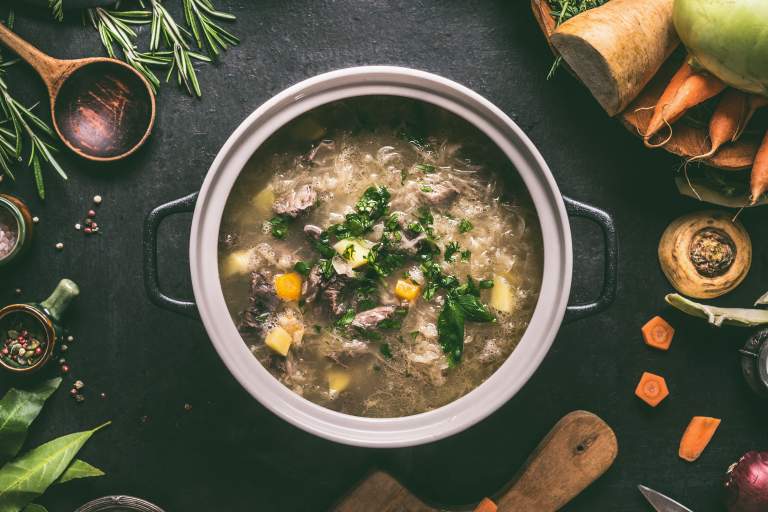
A staple for traditional Japanese cuisine is the incorporation of steamed white rice or gohan (御飯), but in these lean and green Japanese recipes, we'll show you how to get the same flavors with cauliflower rice!
Mediterranean
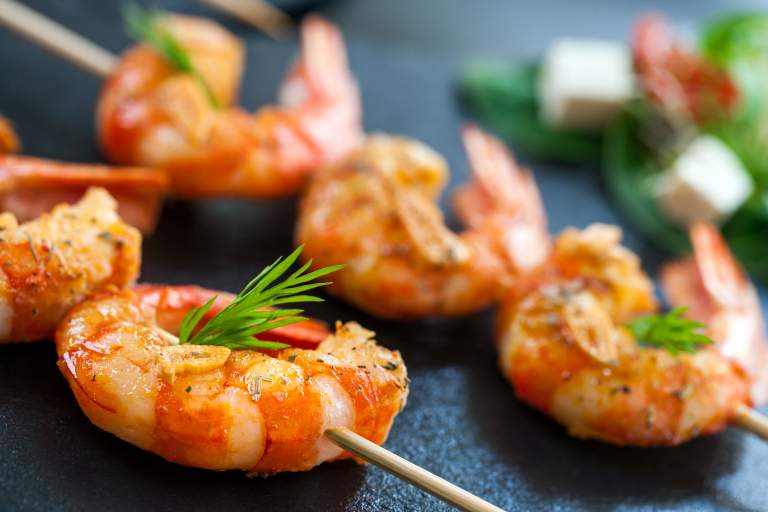
Mediterranean Cuisine
Mediterranean cuisine covers a wide assortment of dishes from Greece, Turkey, Italy, Span, Egypt, France, Israel, Morocco, Syria, Libya, Tunisia, and Algeria. Their diet is a blend of nourishing plant foods where beans, veggies, whole grains, herbs, olive oil, and spices are used more than meat and seafood.
Let's look at how different civilizations intermingled, what ingredients they brought to the place, and how diverse food cultures came together to form the Mediterranean cuisine.
A Brief History
Bordering the Mediterranean Sea, this is believed to be the world's earliest civilization. The Mediterranean cuisine we are familiar with; can be traced back to the 1950s. However, the cuisine's roots go way back to ancient Egypt's 3rd or 4th century.
Two chief factors are responsible for forming the Mediterranean cuisine of the present times.
Firstly, there were several conquests. Each conquest led to a change in the ruling government, and new culture and food practices were introduced. Gradually, diverse societies inhabited the region resulting in authentic recipes being developed with different ingredients and cooking techniques.
Secondly, the Mediterranean region is a place of intersection. Therefore, various civilizations such as European, Asian, African, and others met as traders to exchange food items and spices. Thereby, new ingredients made their way into the Mediterranean recipes.
Ingredients
The pleasant sunny climatic conditions and geographical location allows the production of various crops. Thus, wheat and fresh veggies dominate Mediterranean cuisine ingredients—legumes, eggplant, tomatoes, squash, onions, okra, artichokes, cucumbers, etc. Vegetables are prepared fresh in salad and sauteed, baked, grilled, pureed, and roasted.
Olives and olive oil are extensively used in Mediterranean recipes. Seafood is more commonly cooked as compared to meat which is used sparingly. Cheese and yogurt are used a lot too.
Furthermore, the fertile land and good weather also support many herbaceous plants. Thus, dill, oregano, mint, rosemary, thyme, parsley, fennel, saffron, and garlic are vital in culinary preparations.
Famous Dishes of Mediterranean Cuisine
The staple "Pita Bread," which showcases Greek cuisine, is commonly halved and stuffed with delicious gyro or souvlaki in the hollow pocket.
A wide variety of salads are relished as well. The salads include garbanzo beans, fresh veggies, couscous, cheese, and olives.
"Kibbeh" is considered the national dish of the Mediterranean region. It is a delicacy where ground meat is mixed with spices, onions, & bulger wheat, shaped, and fried. Kibbeh and falafel look similar but are different. While kibbeh is a non-vegetarian dish, falafels are vegan. The popular sides/dips such as Baba Ghanous, hummus, and Muhammara also originated in Syria.
The delectable meaty kebabs, globally known "baklava" dessert, and egg-baed dish "Mememen" are Turkish recipes. Additionally, the middle east's Chicken Shawarma, Moroccon Shakshuka, Spanish paella, and Tuscan chicken are all parts of Mediterranean cuisine.
Mediterranean folks enjoy a lot of flavorful slow-cooked stews and soups, and they are prepared with veggies, beans, seafood, and meat. The Moroccan "Tangine," Turkish "Turlu," Tuscan "Ribollita," and Lebanese "Makhlouta" are some delicious stews of the Mediterranean cuisine.
Mexican
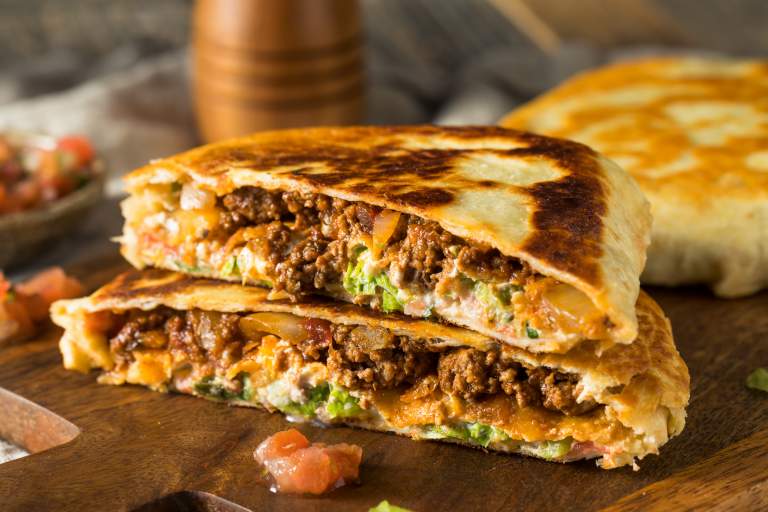
Mexican Cuisine
The vibrant and lip-smacking Mexican cuisine forms a core part of Mexican culture. Mexicans believe in eating well irrespective of eating at home, in the school/office canteen, at a market, bakery, cafe, or restaurant.
Thus, they have dedicated meal times. Starting with “Desayuno,” a light morning hot drink (coffee or hot chocolate) sipped with sweet bread. It is followed by “Almuerzo,” a breakfast/brunch. Next comes the “Comida,” a wholesome lunch comprising soup, rice/pasta, tortillas, and bolillos (white rolls/bread). Finally, ending with a delicious dinner comprising tacos, tamales with atole, and sweetbreads with milk/coffee.
History of Mexican Cuisine
The origins of Mexican cuisine go back to 7000 BC when indigenous folks collected plants like wild chile pepper and hunted animals. Slowly, corn, beans, squash, and chile peppers became the base of Mexican dishes. Native American influences can be seen in using several ingredients such as red/green tomatoes, potatoes, avocadoes, turkey, and chocolate.
Spanish immigrants colonized Mexico in the 15th century. They brought new ingredients like garlic, rice, olive oil, coriander, and spices. They also brought domestic animals such as chickens, pigs, goats, sheep, and cows, which provided meat and dairy. The milk extracted from goats, sheep, and cows was used to make cheese.
Besides the indigenous, European, and Spanish influences, Mexican cuisine also had French culinary results in the 19th century.
Mexican Food Across the Region
Northern Mexico is popular for its burritos, quesadillas, nachos, carne asada, and beef recipes (like dried beef Machaca).
Tamales and moles are relished in the Oaxaca region. Tamale is boiled corn dough with meat filling, while a mole is a dark spicy sauce drizzled on meat.
Meat dishes are also popular in the western mountain areas of Mexico. They prepare beef or mutton in a spicy tomato gravy.
Tropical fruits are available in abundance around the Yucatan area (home to the ancient Mayan civilization). Therefore, dishes in the region have a citrusy and spicy flavor due to local fruits. Some specialties are Turkey lime soup, Pollo pibil, and pickled red onion.
Mexican Seafood dishes like Ceviche, Tacos de Marlin, and Pescado Zarandeado are popular in the Pacific Coast & Baja California Peninsula area.
A large variety of Chile peppers and beans are cultivated in Mexico. Habanero is the hottest Chile in the region. Both fresh and dried chilies are used in Mexican cuisine. Rice is also a typical side dish often served at home and in restaurants.
Popular Mexican Dishes in the Present Times
The thin round flatbreads usually made with corn/wheat flour called “Tortillas” are a staple Mexican food. They are typically warmed and enjoyed as a taco by stuffing with meat, fresh veggies, salsa, sauce, and cheese. When the tortilla is wrapped with meat, beans, & cheese filling and drizzled with chili sauce, they are known as “enchiladas.”
Salsa or pico de gallo is a refreshing Mexican specialty relished as a sauce, side dish, filling, or topping. It is prepared with tomatoes, red onion, cilantro, chili pepper, and lemon juice.
Tostadas and Chilaquiles are two yummy preparation where fried tortillas are served with different toppings.
Mexican cuisine also features the delicious Pozole, where corn and veggies are prepared with fresh herbs, spices, dried chili powder, and lemon juice!
{{ name }}
Currently we have yet to add any lean and green {{ name }} recipes, but we're adding new recipes every day and we hope to have some listed very soon!
Vietnamese
Currently we have yet to add any Lean and Green Vietnamese recipes, but we're adding new recipes every day and we hope to have some listed very soon!
Other
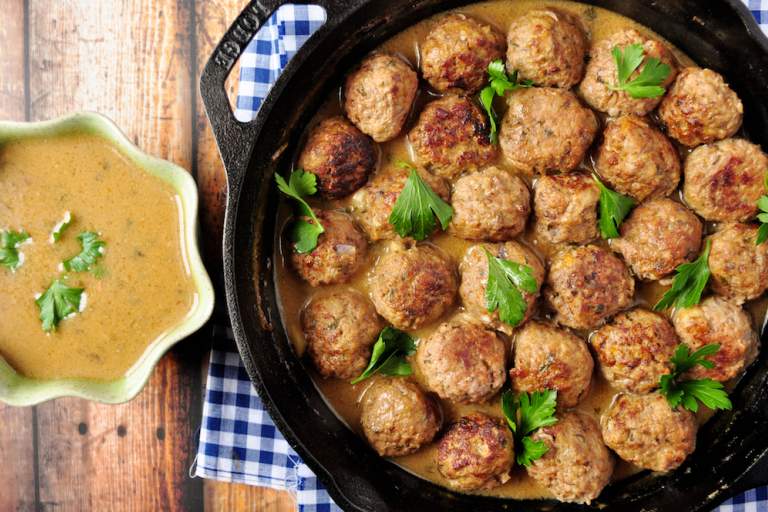
Cuisine on a global level encompasses the wide range of food and drink traditions that are practiced around the world. Each region has its own unique culinary traditions that are shaped by various factors such as geography, climate, culture, and history. For example, Asian cuisine is known for its use of rice, noodles, and a wide range of spices and herbs, while European cuisine features a diverse array of bread, cheese, and cured meats. African cuisine often centers around stews and soups made with local vegetables and grains, while South American cuisine features a range of dishes made with steak, beans, corn, and tropical fruits.
The globalization of food has also led to the fusion of different culinary traditions, resulting in the creation of new and exciting flavors and dishes. The fusion of different culinary traditions has led to the creation of dishes like sushi burritos, Korean tacos, and Indian-inspired pizza. The rise of international travel and the internet has also made it easier for people to explore and learn about different cuisines from around the world. This has resulted in a greater appreciation for diverse flavors and culinary traditions, and has led to the creation of new and innovative dishes that incorporate global flavors and ingredients.

